| Author |
 Topic Topic  |
|
|
lemonade kid
Old Love
    
USA
9875 Posts |
 Posted - 01/07/2013 : 16:05:05 Posted - 01/07/2013 : 16:05:05


|
JOHN CALE-the great one. Velvets, Reed, solo
9 March 1942 (age 71)
Garnant, Carmarthenshire, Wales
I Keep A Close Watch
https://www.youtube.com/watch?v=PEk4zY-6P-k
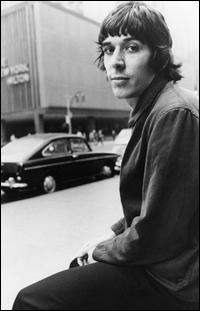
John Davies Cale, OBE (born 9 March 1942) is a Welsh musician, composer, singer-songwriter and record producer who was a founding member of the experimental rock band The Velvet Underground.
Though best known for his work in rock music, Cale has worked in various genres including drone and classical. Since departing from the Velvet Underground in 1968 he has released approximately 30 albums. Of his solo work, Cale is perhaps best known for his album Paris 1919, and his cover version of Leonard Cohen's "Hallelujah", plus his mid-1970s Island Records trilogy of albums: Fear, Slow Dazzle, and Helen of Troy.
Cale has produced or collaborated with Lou Reed, Nico, La Monte Young, John Cage, Terry Riley, Hector Zazou, Cranes, Nick Drake, Mike Heron, Kevin Ayers, Brian Eno, Patti Smith, The Stooges, The Modern Lovers, Art Bergmann, Manic Street Preachers and frontman James Dean Bradfield, Marc Almond, Element of Crime, Squeeze, Happy Mondays, LCD Soundsystem, The Replacements, and Siouxsie and the Banshees.
Cale was inducted into the Rock and Roll Hall of Fame as member of the Velvet Underground in 1996, and appointed Officer of the Order of the British Empire in 2010.
....................................
Having discovered a talent for viola, he studied music at Goldsmiths College, University of London. Whilst there he organised an early Fluxus concert, A Little Festival of New Music, 6 July 1963. He also contributed the short film Police Car and two scores published in Fluxus Preview Review, July 1963, to the nascent avant-garde collective. He conducted the first performance in the UK of Cage's Concert for Piano and Orchestra with the composer and pianist Michael Garrett as soloist. He felt an affinity for the U.S. and rock music from an early age, and subsequently travelled to America to continue his musical training, thanks to the help and influence of Aaron Copland.
Arriving in New York City, he met a number of influential composers. On 9 September 1963, with John Cage and several others, Cale participated in an 18-hour piano-playing marathon that was the first full-length performance of Erik Satie's "Vexations". After the performance, Cale appeared on the television panel show I've Got a Secret. Cale's secret was that he had performed in an 18-hour concert, and he was accompanied by a man whose secret was that he was the only audience member who had stayed for the duration.
Cale also played in La Monte Young and Tony Conrad's ensemble the Theater of Eternal Music also known as the Dream Syndicate (not to be confused with the 1980s band of the same name). The heavily drone-laden music he played there proved to be a big influence in his work with his next group, the Velvet Underground. One of his collaborators on these recordings was Velvet Underground guitarist Sterling Morrison. Three albums of his early experimental work from this period were released in 2001.
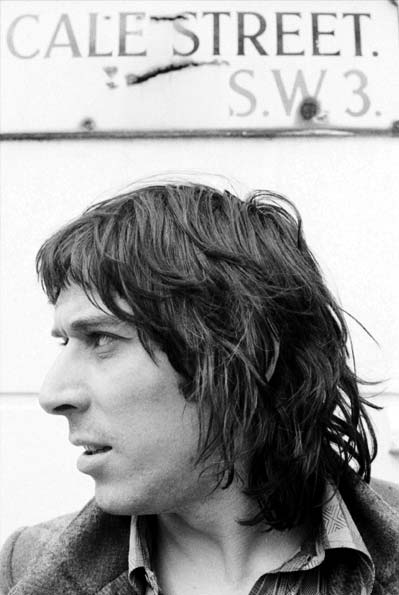
The Velvet Underground
In early 1965, he co-founded The Velvet Underground with Lou Reed, recruiting Reed's college friend Sterling Morrison and Cale's flatmate Angus Maclise to complete the initial line-up. Cale left the band in September 1968, due in part to creative disagreements with Reed.
The very first commercially available recording of the Velvet Underground, an instrumental track called "Loop" given away with Aspen Magazine, was a feedback experiment written and conducted by Cale. His creative relationship with Reed was integral to the sound of the Velvet Underground's first two albums, The Velvet Underground & Nico (recorded in 1966, released in 1967) and White Light/White Heat (recorded in 1967, released in 1968). On these albums he plays viola, bass guitar and piano, and sings occasional backing vocals. White Light/White Heat features Cale on organ (on "Sister Ray") as well as two vocal turns: "Lady Godiva's Operation", an experimental song where he shares lead vocal duties with Reed, and "The Gift", a long spoken word piece written by Reed. Though Cale co-wrote the music to several songs, his most distinctive contribution is the electrically amplified viola.
Cale also played on Nico's 1967 debut album, Chelsea Girl, which features songs co-written by Velvet Underground members Cale, Reed and Morrison, who also feature as musicians. Cale makes his debut as lyricist on "Winter Song" and "Little Sister".
Apart from appearing on these three albums, he also played organon the track "Ocean" during the practice sessions to produce demos for the band's fourth album Loaded, nearly two years after he left the band. He was enticed back into the studio by the band's manager, Steve Sesnick, "in a half-hearted attempt to reunite old comrades", as Cale put it.[7] Although he does not appear on the finished album, the demo recording of "Ocean" was included in the 1997 Loaded: Fully Loaded Edition re-issue. Finally, five previously unreleased tracks recorded in late 1967 and early 1968 were included on the outtakes compilations VU (1985) and Another View (1986).
Arguably, the artistic frictions between Cale and Reed are what shaped the group's early sound much more than any other members. The pair often had heated disagreements about the direction of the group, and this tension was central to their later collaborations. When Cale left, he seemed to take the more experimentalist tendencies with him, as is noticeable in comparing the noise-rock experimental White Light/White Heat (which Cale co-created) to the more pop-oriented The Velvet Underground, recorded after his departure.
Solo career
1970s
After leaving the Velvet Underground, Cale worked as a record producer and arranger on a number of albums, including Nico's The Marble Index, Desertshore and (later on Island) The End.... On these he accompanied Nico's voice and harmonium using a wide array of instruments to unusual effect. He also produced The Stooges' self-titled debut. He appeared on Nick Drake's second album, Bryter Layter, playing viola and harpsichord on two of the album's tracks. While meeting with producer Joe Boyd, he came across Drake's music and insisted on collaborating with him. After a quick meeting, they collaborated on "Northern Sky" and "Fly".
In 1970, in addition to his career as a producer, Cale began to make solo records. His first, the pastoral Vintage Violence, is generally classified as folk-pop. Shortly thereafter, his collaboration with another classical musician, Terry Riley, on the mainly instrumental Church of Anthrax, was released, although it was actually recorded almost a year prior. His classical explorations continued with 1972's The Academy in Peril. He would not compose in the classical mode again until he began composing for soundtracks in the 1980s.
In 1972, he signed with Reprise Records as performer and in-house producer. The Academy in Peril was his first project for Reprise. His fourth solo record Paris 1919 (1973) steered back towards the singer-songwriter mode; made up of songs with arcane and complex lyrics, it has been cited by critics as one of his best. While at Reprise he produced albums by Jennifer Warnes (her third, Jennifer), Chunky, Novi & Ernie, and The Modern Lovers, their first, which Reprise chose not to release: it subsequently appeared on Beserkley Records, the first of a number of important Cale-produced protopunk records. In 1974 he joined Island, working on records with Squeeze, Patti Smith, and Sham 69, among others. During this period, he also worked as a talent scout with Island's A&R department.
Mid-1970s
Moving back to London, Cale made a series of solo albums which moved in a new direction. His records now featured a dark and threatening aura, often carrying a sense of barely suppressed aggression. A trilogy of albums – Fear, Slow Dazzle, and Helen of Troy – were recorded with other Island artists including Phil Manzanera and Brian Eno of Roxy Music, and Chris Spedding, who featured in his live band. This era of Cale's music is perhaps best represented by his somewhat disturbing cover of Elvis Presley's iconic "Heartbreak Hotel", featured both on Slow Dazzle and the live album June 1, 1974, recorded with Kevin Ayers, Nico and Eno, and by his frothing performance on "Leaving It Up To You", a savage indictment of the mass media first released on Helen of Troy (1975), but quickly deleted from later editions of the record due perhaps[citation needed] to the song's pointed Sharon Tate reference. Both "Leaving It Up To You" and "Fear Is A Man's Best Friend" (from Fear) begin as relatively conventional songs that gradually grow more paranoid in tone before breaking down into what critic Dave Thompson calls "a morass of discordance and screaming".
In 1977, he released the Animal Justice EP, notable particularly for the epic "Hedda Gabler", based very loosely on the Ibsen play. His often loud, abrasive and confrontational live performances fitted well with the punk rock scene developing on both sides of the Atlantic Ocean. Cale took to wearing a hockey goaltender's mask onstage: see the cover of the Guts compilation (1977). This look predated Friday the 13th's villain, Jason Voorhees, by several years. During one gig in Croydon he chopped the head off a dead chicken with a meat cleaver, and his band walked offstage in protest. Cale's drummer – a vegetarian – was so bothered he quit the group. Cale mocks his decision on "Chicken ****" from the Animal Justice EP. Cale has admitted that some of his paranoia and erratic behaviour at this time was associated with heavy cocaine use.
In December 1979, Cale's embrace of the punk rock ethic culminated in the release of Sabotage/Live. This record, recorded live at CBGB that June, features aggressive vocal and instrumental performances. The album consists entirely of new songs, many of which grapple confrontationally with global politics and paranoia. The band used includes Deerfrance on vocals and percussion. An earlier live set, consisting mostly of new material, was recorded at CBGB the previous year. It was released in 1991 as Even Cowgirls Get the Blues. The band on that recording includes Ivan Kral of the Patti Smith Group on bass and Judy Nylon on vocals.
1980s
Cale performing in Toronto, 1980
In 1980, Cale signed with A&M Records and moved in a more commercial direction with the album Honi Soit. He worked with producer Mike Thorne towards this end.[11] Andy Warhol provided the cover art, in black and white, but against Warhol's wishes Cale colourised it. The new direction did not succeed commercially, however, and his relationship with A&M ended.
He signed with Ze Records, a company he had influenced the creation of and which had absorbed Spy Records, the label he had co-founded with Jane Friedman. The next year, Cale released the sparse Music for a New Society. Seeming to blend the refined music of his early solo work with the threatening music that came later, it is by any standard a bleak, harrowing record. It's been called "understated, and perhaps a masterpiece."
He followed up with the album Caribbean Sunset, also on Ze Records. This work, with much more accessible production than Music for a New Society, was still extremely militant in some ways. It has never seen release on CD. A live album, John Cale Comes Alive, followed it and included two new studio songs, "Ooh La La" and "Never Give Up On You". Different mixes of the two studio tracks appeared on both sides of the Atlantic. His daughter Eden Cale was born in July 1985.
In a last effort at commercial success, Cale recorded Artificial Intelligence, his only album for Beggars Banquet records. This album, written in collaboration with Larry "Ratso" Sloman, was characterised by synthesisers and drum machines and is entirely written in the pop idiom. It was not significantly more successful than its predecessors, despite the relative success of the single "Satellite Walk". However, "Dying on the Vine" is generally regarded as one of Cale's best songs.
In part because of his young daughter, Cale took a long break from recording and performing. He made a comeback in 1989 with vocal and orchestral settings of poems by Dylan Thomas. Notable among these is "Do Not Go Gentle Into That Good Night", which he performed on stage in the concert held in Cardiff in 1999 to celebrate the opening of the Welsh Assembly. The music was recorded in 1992 with a Welsh boys' choir and a Russian orchestra, on an Eno-produced album: Words for the Dying. This album also included a pair of electric piano "Songs Without Words" and a Cale/Eno collaboration, "The Soul of Carmen Miranda".

1990s
John Cale selected the verses by Leonard Cohen which most covers have since followed. First recorded by Cale in 1991 for the Cohen tribute album I'm Your Fan.
In 1990, he again collaborated with Eno on an album entitled Wrong Way Up, the accessible and uptempo album at odds with Cale's description of the fraught relationship between the pair.
Then in 1991 Cale contributed one song, "Hallelujah", to the tribute album to Leonard Cohen, I'm Your Fan. Cale's uptempo version was performed on piano, and his cover forms the basis of most subsequent performances since.
In 1992, Cale performed vocals two songs, "Hunger" and "First Evening" on French producer Hector Zazou's album Sahara Blue. All lyrics on the album were based on the poetry of Arthur Rimbaud. In 1994, Cale performed a spoken-word duet with Suzanne Vega on the song "The Long Voyage" on Zazou's album Chansons des mers froides. The lyrics were based on the poem "Les Silhouettes" by Oscar Wilde, and Cale co-wrote the music with Zazou. It was later released as a single (retitled "The Long Voyages" as it featured several remixes by Zazou, Mad Professor, and more).
Songs for Drella saw him reunited with Reed, in a tribute to one-time Velvet Underground manager and mentor Andy Warhol. In his autobiography, Cale revealed that he resented letting Lou take charge of the project. The longstanding friction between the two contributed to the passion and lurching frustration evident in the sound of the album, similarly driven by the ambivalent relationship Reed had to Andy. The collaboration eventually led to the brief reunion of the Velvet Underground in 1993.
Nico, an instrumental ballet score and tribute to the singer, was performed by Scapino Rotterdam plus an added selection from The Marble Index in 1998, with the score released as Dance Music. That same year, Cale was also the organiser of the "With a Little Help from My Friends" festival that took place at the Paradiso in Amsterdam.[14] The concert was shown on Dutch national television and featured a song specially composed for the event and still unreleased, "Murdering Mouth", sung in duet with Siouxsie Sioux.
Cale has also written a number of film soundtracks, often using more classically influenced instrumentation. His autobiography, What's Welsh for Zen?, was published in 1999 by Bloomsbury, a collaboration with Victor Bockris, author of a controversial biography of Lou Reed.
2000s to present
Cale at UCLA's Royce Hall, 2010
In 2001, the motion picture Shrek featured Cale's recording of the Leonard Cohen song "Hallelujah", which greatly popularised the song with younger audiences.
Signing to EMI in 2003 with the EP Five Tracks and the album HoboSapiens, Cale again returned as a regular recording artist, this time with music influenced by modern electronica and alternative rock. The well received album was co-produced with Nick Franglen of Lemon Jelly. That record was followed with 2005's album BlackAcetate.
In 2005, Cale produced Austin singer-songwriter Alejandro Escovedo's eighth album, The Boxing Mirror, which was released in May 2006. In June 2006, Cale released a radio and digital single, "Jumbo in tha Modernworld", that was unconnected to any album. A video was created for the song as well.
In March 2007 a 23-song live retrospective, Circus Live, was released in Europe. This two-disc album, composed of recordings from both the 2004 and 2006 tours, featured new arrangements and reworkings of songs from his entire career. Of particular interest is the Amsterdam Suite, a set of songs from a performance at the Amsterdam Paradiso in 2004.[16] A studio-created drone has been edited into these songs. The set also included a DVD, featuring electric rehearsal material and a short acoustic set, as well as the video for "Jumbo in tha Modernworld", a 2006 single.
In May 2007, Cale contributed a cover of the LCD Soundsystem song "All My Friends" to the vinyl and digital single releases of the LCD Soundsystem original. Cale has continued to work with other artists, contributing viola to Replica Sun Machine, the Danger Mouse-produced second album by London psychedelic trio The Shortwave Set and producing the second album of American indie band Ambulance Ltd.
On 11 October 2008, Cale hosted an event to pay tribute to Nico called "Life Along the Borderline" in celebration of what, five days later, would have been her 70th birthday. This event featured many artists including James Dean Bradfield, Mark Lanegan, Mark Linkous of Sparklehorse, The Fiery Furnaces, Guillemots, Nick Franglen of Lemon Jelly, Peter Murphy, Liz Green, and Lisa Gerrard of Dead Can Dance. The event was reprised at the Teatro Communale in Ferrara, Italy on 10 May 2009, with Mercury Rev, Mark Lanegan, Lisa Gerrard, Peter Murphy, Soap&Skin and Mark Linkous.
Cale represented Wales at the 2009 Venice Biennale, collaborating with artists, filmmakers, and poets, and focusing the artwork on his relationship with the Welsh language.
In January 2010 Cale was invited to be the first Eminent Art in Residence (EAR) at the Mona Foma festival curated by Brian Ritchie held in Hobart, Tasmania, Australia. His work for the 2009 Venice Biennale 'Dyddiau Du (dark days)'[19] was shown at the festival, along with a number of live performances at venues around Hobart.
Cale in 2010
The Paris 1919 album was performed, in its entirety, at the Coal Exchange Cardiff on 21 November 2009, at the Royal Festival Hall in London on 5 March 2010, and the Theatre Royal in Norwich on 14 May 2010. These performances were reprised in Paris on 5 September 2010, Brescia, Italy on 11 September 2010, Los Angeles, CA on 30 September 2010 at UCLA's Royce Hall, Melbourne, Australia on 16 October 2010, Barcelona, Spain, 28 May 2010 and Essen, Germany, 06 October 2011.
Cale was appointed Officer of the Order of the British Empire (OBE) in the 2010 Birthday Honours.
In February 2011 Cale signed a record deal with Domino Records subsidiary Double Six and released an EP, Extra Playful, in September 2011.
In May 2011, Cale and his band appeared at the Brighton Festival, performing songs to the theme of Émigré/Lost & Found. Cale appeared at the invitation of the human rights advocate and Nobel Peace Prize winner Aung San Suu Kyi, who was the festival's guest director.
Personal life
In 1968, John Cale married fashion designer Betsey Johnson. The couple divorced less than a year later.
In 1971, Cale met Cynthia "Cindy" Wells, better known as Miss Cindy of The GTOs.[23] They wed soon afterward. Their marriage was rocky, and they divorced in 1975.
On 6 October 1981, Cale married his third wife, Risé Irushalmi. They had one child together, Eden Myfanwy Cale, born 14 July 1985. They divorced in 1997.
John Cale currently resides in Los Angeles.
Substance abuse
As a child, John Cale suffered from severe bronchial issues, which led to a doctor prescribing him opiates. He would come to rely on the drug in order to fall asleep. Biographer Tim Mitchell claims Cale's early dependence on medicine was a "formative experience." Cale later told an interviewer that, "When I got to New York, drugs were everywhere, and they quickly became part of my artistic experiment."
He was heavily involved in New York's drug scene of the 1960s and 1970s, with cocaine as his drug of choice.[29][30] He stated to have "taken most of the available drugs in the United States." Cale has said that, "In the '60s, for me, drugs were a cool experiment... In the '70s, I got in over my head." He now feels his drug addiction negatively affected his music during the 1980s, and that he decided to clean up following a series of embarrassing concerts and the birth of his daughter. According to a 2009 interview with the BBC Cale’s “strongest drug” he now takes is tea.
Solo studio albums
* 1970 : Vintage Violence
* 1972 : The Academy in Peril
* 1973 : Paris 1919
* 1974 : Fear
* 1975 : Slow Dazzle
* 1975 : Helen of Troy
* 1981 : Honi Soit
* 1982 : Music for a New Society
* 1983 : Caribbean Sunset
* 1985 : Artificial Intelligence
* 1989 : Words for the Dying
* 1996 : Walking on Locusts
* 2003 : HoboSapiens
* 2005 : blackAcetate
* 2012 : Shifty Adventures in Nookie Wood
Collaborative studio albums
* 1971 : Church of Anthrax (with Terry Riley)
* 1990 : Songs for Drella (with Lou Reed)
* 1990 : Wrong Way Up (with Brian Eno)
* 1994 : Last Day on Earth (with Bob Neuwirth)
Hallelujah
https://www.youtube.com/watch?v=vEOZLQ3d1FI
Buffalo Ballet
https://www.youtube.com/watch?v=DRBkBtunec0
Gideon's Bible
https://www.youtube.com/watch?v=2EF0vSV2-TI
Live KEXP
https://www.youtube.com/watch?v=1tEgJk5VfSc
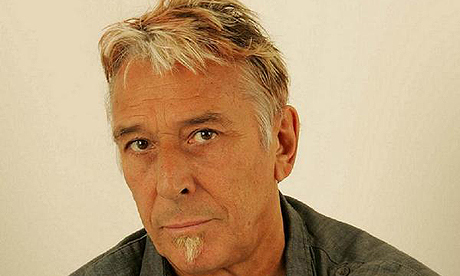
________________________________________________
Old hippies never die, they just ramble on.
-lk |
Edited by - lemonade kid on 01/07/2013 21:21:09 |
|
|
lemonade kid
Old Love
    
USA
9875 Posts |
 Posted - 01/07/2013 : 16:10:33 Posted - 01/07/2013 : 16:10:33


|
JOHN CALE - Paris 1919 - Five star masterpiece!
Paris 1919 live Amsterdam
http://www.youtube.com/watch?v=_3ueIweuUvo
"There will never be another like him - an absolute genius. God bless John Cale!" -youtube

Paris 1919 is a 1973 album by former Velvet Underground member John Cale. It was produced by Chris Thomas and features a backing band consisting largely of members of Little Feat. It is the most accessible and traditional of Cale's albums, and the most well-known of his work as a solo artist.
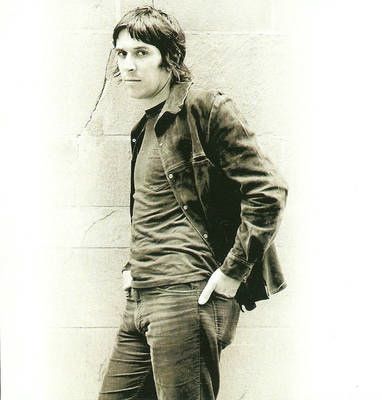
John Cale's 1973 album Paris 1919 has long been justly celebrated as the most accessible and most purely beautiful record of his storied, multi-faceted career. And despite the album's abiding eccentricities-- the literary and historical allusions, posh orchestration, and abstruse lyricism-- it has often seemed to be Cale's most personal and revealing work as well, a deeply felt meditation on loss, dislocation, and introspective yearning. For this lavish new remastered edition, Rhino UK has unearthed 11 previously unreleased rehearsals and alternate takes, including one completed outtake, "Burned Out Affair", not included on the original album. This wealth of additional material nearly triples the running length of the original, and provides fascinating new insight into the deliberative construction of Cale's still-vibrant masterpiece.
By 1973, of course, Cale had already assembled a résumé that would assure his status in the avant-rock pantheon. He'd worked in the Dream Syndicate and Theatre of Eternal Music alongside La Monte Young and Tony Conrad; recorded an album with Terry Riley; produced albums for Nico and the Stooges; and-- most significantly-- had co-founded the Velvet Underground. Yet it must be noted that at this point Cale's musical legacy had not yet entirely caught up with him. His early work with Young and Conrad was (and largely remains) under-documented and clouded in shadow, while the Velvets-- and the Stooges, for that matter-- boasted a reverent cult following but had yet to earn their reputation as supremely influential proto-punk and underground rock icons.
Meanwhile, Cale's post-VU solo work had been largely met with critical and commercial indifference, which eventually lead to him parting ways with Columbia Records. His first album for his new label Reprise was The Academy in Peril, an underrated collection of avant-garde instrumentals that Warner Brothers ultimately decided to bill as their first classical release. Despite this marketing confusion, Cale's standing with Reprise remained solid-- at least if one is to trust Paris 1919's original liner notes, included here-- and he was able to author the new album with some degree of creative control. Just as importantly, and for perhaps the last time in his career, Cale was able to approach the ambitious project with a distinct freedom from audience expectation.
Many of the choices Cale made with the benefit of this freedom remain astonishing to this day. Most noteworthy was his curious decision to enlist the talents of guitarist Lowell George and drummer Richie Hayward, both members of the L.A.-based boogie-rock outfit Little Feat. Though it must have seemed an incongruous choice at the time, this small ensemble proved to be an inspired marriage of styles, as George contributes several lovely, expressive solos and Hayward underscores tracks like "Macbeth" with a cavernous post-Velvets stomp. Cale also employed the UCLA Symphony Orchestra to flesh out his sophisticated, piano-based compositions, and their dramatic arrangements furnish Paris 1919 with much of its stately, haunting grandeur.
Throughout the album, Cale populates his songs with geographic detail-- including not just Paris, but also Barbury, Andalucia, Dunkirk, etc.-- and cryptic characters like Old Taylor, Segovia, and Farmer John. As writer Matthew Specktor points out in his lively liner notes, these wry characterizations allow the album to take on the appearance of a Graham Greene novella, with Greene himself the subject of one of the album's strangest and most erudite tracks. On this track, as elsewhere on Paris 1919, Cale's lyrics veritably drip with intrigue and thinly-masked violence ("It must all seem like second nature/ Chopping down the people where they stand") with the album's central narrative based very loosely upon the Versailles Conference in 1919 Paris. But many of these songs contain tantalizing autobiographical overtones as well, particularly on the opening "Child's Christmas in Wales", which blends its Dylan Thomas references with what might be memories from Cale's own childhood. And on the elegiac "Half Past France", it's left ambiguous whether the song's narrator is a battle-weary WWI soldier returning from the front, or simply an exhausted touring musician wondering where exactly on the map he is.
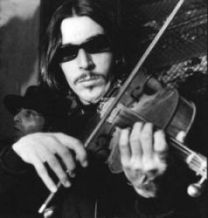
The shadow of Graham Greene returns on this set's one completed outtake, "A Burnt-Out Affair", a track whose name seems a mash-up of two Greene titles: A Burnt-Out Case and The End of the Affair. Despite Cale's rather ragged vocal delivery, this track seems perfectly of a piece with the bulk of Paris 1919, leaving one to wonder what structural concerns might've kept it off the original album. Many of the other bonus tracks included here appear to be unfinished sketches, including a striking rehearsal take of Cale's deathless ballad "Andalucia" which he sings in a muffled near-whisper, sounding as though not entirely sure of the lyrics.
But several of the bonus tracks seem nearer completion, and grant the listener an intriguing glimpse at what could be Paris 1919's alternate history. A hypnotic, viola-led "drone mix" of "Hanky Panky Nohow" draws a stronger link to Cale's earlier musical experiments than anything on the released version of the album, while a stripped-down rendition of "The Endless Planes of Fortune" better accentuates Cale's nuanced vocal and Lowell George's understated country-rock accents. The album's title track appears in two additional versions-- a "string mix" that features only Cale and a small chamber ensemble, and a "piano mix" that includes a beautiful, overtly Brian Wilson-inspired vocal bridge. Each of these alternate tracks is revelatory in its own right, and when taken together with the completed album this collection offers a brilliant working portrait of an artist testing the full possibilities of his songcraft. For better or worse, Cale has never again made another record quite like Paris 1919, at least in part, one suspects, because so many in his audience have since longed for him to do so. -pitchfork
All tracks were composed and arranged by John Cale.
Original 1973 release
Side A
1. "Child's Christmas in Wales" (3:21)
2. "Hanky Panky Nohow" (2:46)
3. "The Endless Plain of Fortune" (4:13)
4. "Andalucia" (3:54)
5. "Macbeth" (3:08)
Side B
6. "Paris 1919" (4:07)
7. "Graham Greene" (3:00)
8. "Half Past France" (4:20)
9. "Antarctica Starts Here" (2:47)
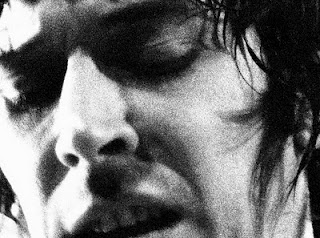
Bonus tracks 2006 remaster
10. "Burned Out Affair" – outtake
11. "Child's Christmas in Wales" - alternate version
12. "Hanky Panky Nowhow" - drone mix
13. "The Endless Plain Of Fortune" - alternate version
14. "Andalucia" - alternate version
15. "Macbeth" - rehearsal
16. "Paris 1919" - string mix
17. "Graham Greene" - rehearsal
18. "Half Past France" - alternate version
19. "Antarctica Starts Here" - rehearsal
20. "Paris 1919" - piano mix
21. "Macbeth" - instrumental (hidden track)
Andalicia
http://www.youtube.com/watch?v=r7iLFuapeY8&feature=relmfu
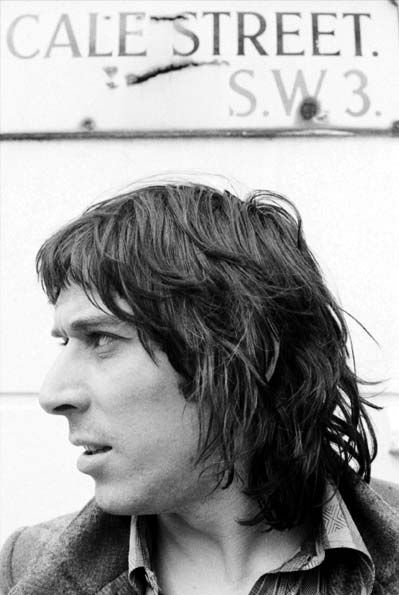
________________________________________________
Old hippies never die, they just ramble on.
-lk |
 |
|
|
lemonade kid
Old Love
    
USA
9875 Posts |
 Posted - 01/07/2013 : 21:20:29 Posted - 01/07/2013 : 21:20:29


|
Music for a New Society
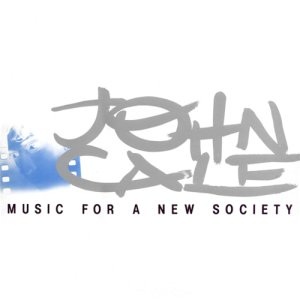
Broken Bird
http://www.youtube.com/watch?v=H1r5fhtYZV4
Music for a New Society is an album by former Velvet Underground member John Cale. Released into an era dominated by bands like the Jam, ABC and Dexys Midnight Runners the album sank without trace. The songs sound as though they were written, examined and then dismantled, Cale removing any linear structure, any obvious melody, any choruses or verses leaving a series of stark sketches giving the listener nothing to hold on to.
Desolate, horrifying and by no means easy-listening it has few peers, it is an album of tormented lullabies representing a life in ruins. Mostly improvised live in Skyline studios New York City, Cale sat down at a piano, and the engineers turned on the tape; all the songs were recorded that way over a ten-day period, apart from "Damn Life".
Cale has described it as his most tormented work but with a formal structure behind all the mess, and the recording process a grotesque experience, but describes the results as the kind of beauty he can live with. His record label had requested it would be a proper solo album, Cale reinterpreted that immediately as meaning solo with overdubs, with only one band track.
It would be something Cale had not attempted before but similar in style to arranging Nico's The Marble Index. In a Melody Maker interview shortly after its release Cale was quoted as saying "That album was agony. Apart from a couple of poems that Sam Shepherd... (at the time Cale was working with Shepherd on his opera "The sad lament of Pecos Bill on the eve of killing his wife")... sent me that I set to music, the songs were completely improvised in the studio. It was like method acting. Madness. Excruciating. I just let myself go. It became a kind of therapy, a personal exorcism. The songs are mostly about regret and misplaced faith. There were some examples where songs ended up so emaciated they weren't songs any more. There is not much in the way of comedy. Tortuous is a good word for it. What I was most interested in was the terror of the moment...but it wasn't made to make people jump out of windows".
It was first released in the UK in October 1982 on Ze Records. It went in stark contrast with his previous album, Honi Soit, which was Cale's most commercial on both sides of the Atlantic, as it contained very minimalist instrumentation and a great deal of sonic space. Allmusic has called it "Spare, understated, and perhaps a masterpiece." "(I Keep A) Close Watch" is a re-recording of the song originally released on Helen of Troy and was released as a single in both the UK and Europe. The original "Mama's Song", featured a telephone call between John Cale and his mother. She had sung "Ar Lan y Mor" (On The Sea Shore). When she was taken ill, Cale decided not to include it on the album, a decision he was later to regret.
The engineer misread Cale's handwritten title of "Sanctus" and thus the track was named "Santies" on the LP. The CD reissue, which is no longer manufactured, calls it "Sanities". The song was the inspiration for the title and closing quote of the twelfth chapter of the comic book "Watchmen" entitled "A Stronger Loving World". Twenty years after its release Cale commenting in UNCUT Magazine about the album's continued popularity said "Maybe what people are seeing there is the pain involved. People like watching suffering. I just have painful memories of it. There's only so much heroism you can milk from a situation like that. I think its really passionate, really interested in the humanity of people. It is something I am proud of."
The cover photography is by Betsey Johnson, Cale's former wife. "Changes Made" is the only track to feature a full band and was the b side of the "Close Watch" single released in Europe. Cale was not happy with the song and wanted it removed from the final track listing despite recording a promotional video for it. - Blue Öyster Cult's Allen Lanier plays lead guitar on it.
UNCUT Magazine listed it at number 10 in their list of great 'lost' albums in the May 2010 edition.
Allmusic regard this album as 'perhaps his masterpiece'.
Track listing
All tracks composed by John Cale; except where indicated
Side A
1. "Taking Your Life in Your Hands"
2. "Thoughtless Kind"
3. "Santies" (misspelt "Sanities" on CD reissue)
4. "If You Were Still Around" (Cale, Sam Shepard)
5. "Close Watch"
"Mamas Song" (removed from CD reissues since 1993)
Side B
6. "Broken Bird"
7. "Chinese Envoy"
8. "Changes Made"
9. "Damn Life" (Cale, Risé Cale)
10. "Risé, Sam and Rimsky-Korsakov" (Cale, Sam Shepard)
11. "In the Library of Force" (included on CD reissues since 1993)
Singles
"Close Watch" b/w "Changes made" 7" Germany 1982.
"Close Watch" b/w "I Keep A Close Watch" 7" Germany 1982, UK 1983. (the B-side is the Helen of Troy version)
.............
Allmusic guide review...
Spare, understated, and perhaps a masterpiece.
The aural chaos and intense paranoia of John Cale's "comeback" albums Sabotage/Live and Honi Soit seemingly left him with very few places left to go, short of setting back-issues of Soldier of Fortune to music. 1982's Music for a New Society was, from a musical standpoint, a remarkable about-face, sounding calm, spare, and spectral where his last few albums had been all rant and rage; the arrangements were dominated by Cale's open, languid keyboard patterns, and there was far more aural "white space" in their framings than he had permitted himself since The Academy in Peril. But beyond the cool, reserved exteriors of Music for a New Society, one finds a handful of stories of terribly damaged lives; on close inspection, the ethereal opening cut "Taking Your Life in Your Hands" turns out to be the story of a mother gone on a killing spree, while "Sanities," "Thoughtless Kind," and "Damn Life" are full of dashed hopes and painful emotional betrayals. If the approach to the material is a good bit different than what most fans had been used to from Cale, the results were, if anything, among the most compelling music of his career; the open spaces of the arrangements are at once ambient and melodically compelling, and the songs have an emotional resonance that communicates on a deeper and more emotional level than the political hectoring of Sabotage or Honi Soit, intelligent as they may have been. Spare, understated, and perhaps a masterpiece.
Damn Life
http://www.youtube.com/watch?v=lV_8nQqmGmE

________________________________________________
Old hippies never die, they just ramble on.
-lk |
Edited by - lemonade kid on 01/07/2013 21:22:18 |
 |
|
|
rocker
Old Love
    
USA
3606 Posts |
 Posted - 02/07/2013 : 00:14:27 Posted - 02/07/2013 : 00:14:27


|
Spare, understated, and perhaps a masterpiece.
Well I'll say Broken Bird makes me want to go on and explore.
He's one of those artists who's work is kind of 'enigmatic' for me. He's definitely was not a songwriter for the Fruitgum Co. His music can get deep. One of the greats out there. His stuff can get compelling. thx lk. |
 |
|
|
lemonade kid
Old Love
    
USA
9875 Posts |
 Posted - 02/07/2013 : 16:02:21 Posted - 02/07/2013 : 16:02:21


|
quote:
Originally posted by rocker
Spare, understated, and perhaps a masterpiece.
Well I'll say Broken Bird makes me want to go on and explore.
He's one of those artists who's work is kind of 'enigmatic' for me. He's definitely was not a songwriter for the Fruitgum Co. His music can get deep. One of the greats out there. His stuff can get compelling. thx lk.
Sure, rocker.
The album Cale recorded before the above, Honi Soit....not easy to find. Try this blog:
http://ilovetotaldestruction.blogspot.com/2009/09/john-cale-music-for-new-society.html
HONI SOIT
Streets Of Laredo
http://www.youtube.com/watch?v=bMAzT5mKX_8
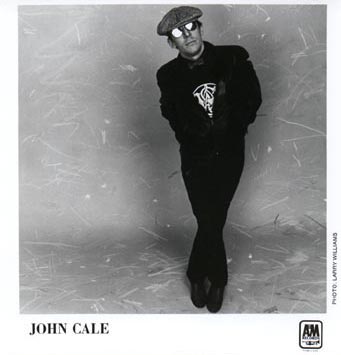
Also worthy of your attention is 1981's long forgotten (why?) Honi Soit. Lurking somewhere between Music For A New Society's tormented primal screaming & the skewering, antagonistic rock of his earlier solo records - both sonically & chronologically - it's unlike anything else in Cale's canon & captures him at his belligerent, chicken-slaughtering best.
Interesting Fact #1: it's produced by Mike Thorne who'd recently completed a run of landmark albums with Wire & Soft Cell's "Tainted Love", & Honi Soit displays noticeable nods in the direction of the then in-vogue post-punk sound, though it's worth pointing out that many of the post-punk bands were referencing Cale's early work to some extent anyway. Interesting Fact #2: backing vocals on "Fighter Pilot" are credited to The Bomberettes, actually The Mo-Dettes incognito. Though it's no magnum opus, the fraught (& virtually unrecognisable) version of "Streets Of Loredo" is a treat & the entire album's tendency towards peculiar instrumental juxtapositions, leering dissonance & lyrical brutality make Honi Soit unforgettable listening, if occasionally a little starved on obvious "melody". Amusingly, Cale was purportedly concerned that fans would think Thorne's rich production job was some indictation of his "selling out" - there's a great eassy (penned by Thorne himself) about the LP's gestation here. I really like it. Dunno why folk fall over 'emselves to praise Sabotage but continue to disregard Honi Soit, but they do. And, yep, it's already been out of print for several years, folks... --ilovetotaldestruction.blogspot
Honi Soit is a 1981 album by John Cale. All songs were written by Cale, except "Streets Of Laredo", a traditional song arranged by Cale.
Andy Warhol suggested the album should be called "John and Yoko", and provided the cover art, in black and white, but against Warhol's wishes Cale colorized it. The musicians on this album are listed as the crew of fighter airplane, with Cale as the flight surgeon.
The album's title is an abbreviation of the phrase "Honi soit qui mal y pense" (French: "shame upon him who thinks evil of it"[1]), the motto of the British Order of the Garter.
The album is Cale's only album to date to chart in the US, reaching #154. --wiki
Side A
1. "Dead Or Alive"
2. "Strange Times In Casablanca"
3. "Fighter Pilot"
4. "Wilson Joliet"
5. "Streets of Laredo"
Side B
6. "Honi Soit (La Première Leçon de Français)"
7. "Riverbank"
8. "Russian Roulette"
9. "Magic & Lies"
Single
"Dead Or Alive" b/w "Honi Soit" 7" UK & NL 1981.
Dead Or Alive...live
http://www.youtube.com/watch?v=zwyJ0spEsLE
* John Cale: guitar, keyboards, viola, lead vocals ("flight surgeon")
* Jim Goodwin: keyboards, synthesizer, background vocals ("gunner")
* Peter Muny: bass, background vocals ("wing and prop")
* Robert Medici: drums, background vocals ("navigator")
* Sturgis Nikides: guitar, background vocals ("hellcat")
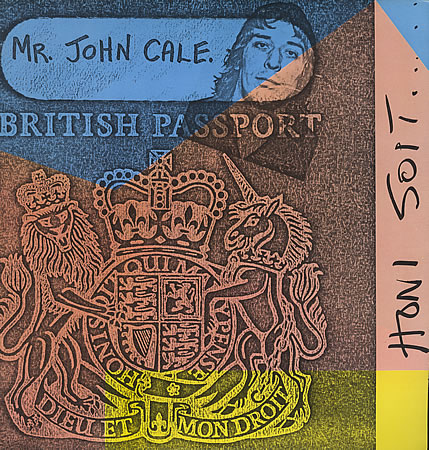
________________________________________________
Old hippies never die, they just ramble on.
-lk |
Edited by - lemonade kid on 02/07/2013 16:11:05 |
 |
|
|
rocker
Old Love
    
USA
3606 Posts |
 Posted - 12/07/2013 : 16:29:21 Posted - 12/07/2013 : 16:29:21


|
it's unlike anything else in Cale's canon & captures him at his belligerent, chicken-slaughtering best.
DOA..whoa...that's a great rock gem!...love that geetar!...I guess the album will be hard to find. |
 |
|
|
rocker
Old Love
    
USA
3606 Posts |
 Posted - 12/07/2013 : 16:41:49 Posted - 12/07/2013 : 16:41:49


|
And further on that 'belligerence'...I checked out Streets of Laredo...
heheh here's Roy Rogers' version..kind of like it too.
http://www.youtube.com/watch?v=NCrbV6jILo4...
Johnny...Johnny....oh the doggies got to him on the streets of Laredo alright.. |
 |
|
| |
 Topic Topic  |
|
|
|


